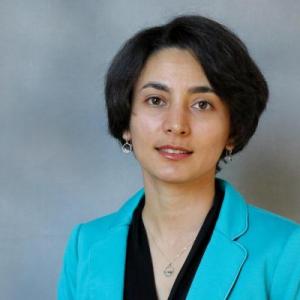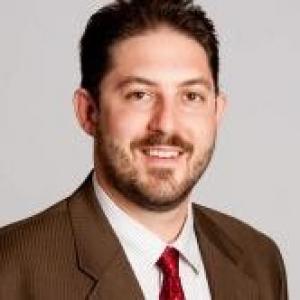Upcoming Seminars
Stay tune!
Past Seminars
28
Sequential Excavation Method (SEM) for the San Diego Courthouse Commons Tunnel Project
Speaker: Tom Pennington, PE, P.Eng, M. ASCE
This seminar will present the recent application of Sequential Excavation Method (SEM) tunneling techniques used for construction of the Courthouse Commons (COCO) Tunnel in downtown San Diego. The COCO Tunnel is a component of the larger Courthouse Commons Development Project and involved construction of a 300-foot long, 28-foot diameter tunnel located directly beneath an existing multi-story building.
28
Sequential Excavation Method (SEM) for the San Diego Courthouse Commons Tunnel Project
Speaker: Tom Pennington, PE, P.Eng, M. ASCE
This seminar will present the recent application of Sequential Excavation Method (SEM) tunneling techniques used for construction of the Courthouse Commons (COCO) Tunnel in downtown San Diego. The COCO Tunnel is a component of the larger Courthouse Commons Development Project and involved construction of a 300-foot long, 28-foot diameter tunnel located directly beneath an existing multi-story building.
23
Safety and Certification of Discontinuous Fiber Composites (DFCs) For Aerospace Applications: Design, Testing, and Computational Modeling
Speaker: Marco Salviato, PhD
Composite materials are finding increasing use across the most important industrial sectors including e.g. aerospace, automotive, and wind energy. This is owed to their excellent specific mechanical properties and their taylorability paving new avenues for structural optimization and weight savings. Engineering marvels such as the Boeing 787 have already proven the benefits of composites and showed that it is possible to adopt these materials in the commercial sector.
16
Understanding Seismic Retrofit, Adaptive Reuse and Rehabilitation of Existing Buildings
Speaker: Matt Skokan, Ph.D., S.E. & Robert Randall, S.E.
This seminar will provide an overall understanding of seismic retrofit and adaptive reuse of existing buildings. Topics covered will include a discussion of the following:
9
Geotechnical Conceptual Design for the Planned Redevelopment of Treasure Island, California
Speaker: Jeff Braun, Kevin McFadden, Manasa Vijayakumar, & Christopher Stouffer
The presentation addresses mitigation concepts for the geotechnical challenges that face the proposed redevelopment of Treasure Island. The island is manmade, created in 1936-1937 for the World’s Fair. It was constructed by placing approximately 30-million cubic yards of dredged sand fill over a sand shoal. After the World’s Fair in 1940, the Navy assumed control of the island through an exchange with the City of SF for Mills field in Millbrae. During WWII, Treasure Island became an active naval base until it was decommissioned in 1997.

Physics-based Modeling of Heterogeneous and Additively Manufactured Materials: Combining Finite Element and Data-Driven Approaches
February 02, 2022 - 12:00 pm
Speaker: Maryam Shakiba
This presentation discusses finite element and physics-based data-driven modeling of progressive damage in fiber-reinforced composites microstructure. We focus on two- and three-dimensional representations of additively manufactured composites. Such simulations are critical in order to design optimized composites for additive manufacturing. In fiber-reinforced composites, cracks initiate around the fibers aligned transversely to the loading direction.

Blast-Liquefaction Tests to Evaluate the Deep, In Situ, Nonlinear-Inelastic Dynamic Response of Medium Dense Sands at PDX
January 26, 2022 - 12:00 pm
Speaker: Armin W. Stuedlein, PhD, P.E. (WA)
As part of its long-term resilience goals, the Port of Portland has determined that one of its two runways must be hardened against the vertical and lateral deformations anticipated following rupture of the Cascadia Subduction Zone and the nearby Port Hills fault. Deep (25 m), in-situ, blast-liquefaction experiments were conducted to provide a means to understand the seismic performance of the soils underlying the runways without the possible effects of sample disturbance, small sample-size effects, and artificial drainage conditions to support design efforts at the Port.
19
Mechanics and Manufacturing of Architected Polymer Foam Composites
Speaker: Pavana Prabhakar, Charles G. Salmon Assistant Professor
Lightweight polymer foam composites are known to dissipate energy under extreme conditions such as severe compressive or impact loading when used as cores in sandwich structures. This is often accompanied with permanent damage or set under excessive deformation. A fundamental question we seek to address is - can we achieve shape recovery without external stimulus after load removal? That is, how do we achieve lightweight and resilient polymer composites?

Transitioning to a Team in Professional Engineering
January 12, 2022 - 12:00 pm
Speaker: Senior Associate Jan Dougalas
This presentation provides insights and recommendations for structural engineering graduate students soon to transition into the engineering/construction workforce. Technical proficiency is assumed and thus the presentation focuses on project team roles and responsibilities and communication both within and external to the project team. A solution to a specific real-world challenge is provided as an example.
5
Faculty Life at a Major Research University: Getting the Job, What to Expect, and How to Survive
Speaker: Dr. Michael Todd
Ever wondered what it takes to get (and keep!) an academic job at a major research university, like UC San Diego? This presentation discusses how faculty job searches are generally conducted, what to expect in the job search process, and then what to expect and how to survive an early career faculty appointment at a major research university. This seminar is targeted for anyone who might be interested in or is currently seeking a faculty position.
